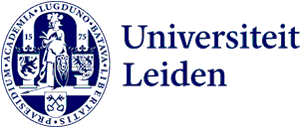Admission requirements
This course is open to all BA students. No specific knowledge of Latin or Greek required. Students of Classics are also most welcome.
Description
The literary texts from Greek and Roman Antiquity have continuously influenced literary texts and works of art in the early modern and modern Western European tradition. The way in which these later ‘hypertexts’ and ‘hyper-icons’ interact with their earlier ‘hypotexts’ is called intertextuality. In this class, we study several pairings of ancient Greek and Roman hypotexts with modern texts and/or artworks. A leading question will be why artists in the European tradition continue to appeal to Greek and Roman examples. A leading hypothesis is that the appeal to Classical texts and stories is always connected to the rhetorical aims of the hypertexts, that is to say to the way in which modern artists and authors try to influence their audiences. The appeal to the ancient tradition can help, for instance, to address issues that would otherwise be too delicate or dangerous to address directly (‘double speech’). The appeal to the authority of a Classical text can also lend a voice to social groups under pressure. On the level of dramatic tension, audiences who know the ancient hypotexts are more engaged recipients of modern texts. They are more acutely aware of what may ‘go wrong’ in the story presented to them (‘dramatic irony’).
Course objectives
At the end of this course:
students will be aware of the rhetorical/persuasive functions of intertextuality by confronting pairs of classical and (early) modern works of art.
Students will be able to analyse the way in which hypertexts and hypotexts hang together in intertextual networkd.
Timetable
The timetables are available on My Timetable.
Mode of instruction
Lecture
Assessment method
Assessment
Mid term examination: written examination with short open questions concerning the theory of intertextuality and the subjects covered in the first part of the term;
Final exam: written examination with short open questions concerning the theory of intertextuality and the subjects covered in the second half of the course.
Weighing
The final mark is established by determining the weighted average of the two examinations (50% both).
Resit
Both exams can be separately taken at the resit.
Exam review
The results of the mid term examination will be discussed in class; for the final examination, a separate session during the examination period (May-June) will be organised. The dates for both these sessions will be announced in the time schedule for this class at the start of the semester.
Reading list
- Graham Allan, Intertextuality, Routledge: London 2011 (pbk);
The (primary) literature to be read for this course will be announced in Brightspace, well before the start of the course.
Registration
Enrolment through MyStudymap is mandatory.
General information about enrolment is available on the website
Registration À la carte education, Contract teaching and Exchange
Information for those interested in taking this course in context of À la carte education (without taking examinations), eg. about costs, registration and conditions.
Information for those interested in taking this course in context of Contract teaching (with taking examinations), eg. about costs, registration and conditions.
For the registration of exchange students contact Humanities International Office.
Contact
For substantive questions, contact the lecturer listed in the right information bar.
For questions about enrolment, admission, etc, contact the Education Administration Office: Arsenaal
Remarks
Not applicable
